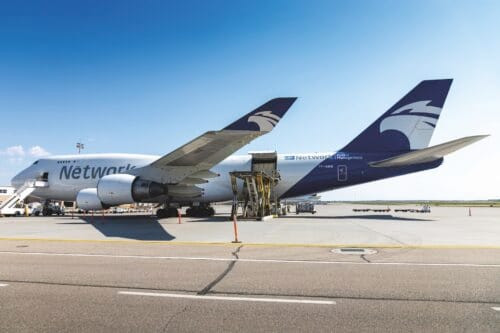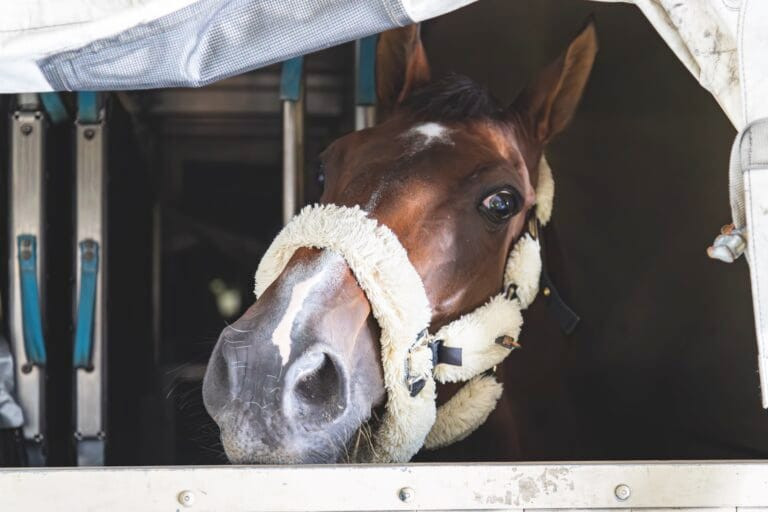- Calgary Airport has developed specialised facilities, including a 10,000 sq ft live animal lounge, to safely handle elite horses, ensuring welfare, stress reduction, and rapid post-flight recovery.
- Transporting horses for international competitions requires precise coordination between airlines, logistics providers, vets, and border officials, using chartered aircraft and custom containers.
- Investments in animal-focused infrastructure position airports like Calgary as global leaders in equine airfreight, supporting competitions, livestock trade, and the transport of rare species.
With international equestrian competitions attracting riders and horses from every corner of the globe, airports have had to adapt to meet the specific needs of live animal transport. Unlike other cargo, horses require space to move, time to decompress, veterinary supervision, and the ability to recover quickly after a long journey. The process is costly, logistically demanding, and at times fraught with risk.
This was on show ahead of the 50th anniversary of the Spruce Meadows Masters in Calgary, Canada, as more than 100 of the world’s top equine athletes flew into the airport for one of the world’s most renowned showjumping tournaments; along with four tonnes of Dutch flowers that will be displayed on the grounds during the tournament
Their arrival involved chartered Boeing 747 flights, months of preparation, and a tightly choreographed partnership between logistics companies, veterinarians, border officials, and airport staff. Airports equipped to handle live animal shipments must do more than provide warehouse space. They need infrastructure tailored to the health and safety of creatures that can weigh over half a tonne and react nervously to unfamiliar environments. Calgary has become a leading example of how such operations should be managed.
At the heart of the airport’s approach is a 30,000 sq ft specialised cargo facility, which includes a dedicated 10,000 sq ft live animal lounge. Inside, horses are transferred from their travel stalls into custom-built pens, where they can rest before being moved to their stables at their final destination. The space is temperature-controlled, monitored around the clock, and designed with features such as a modular hydraulic corral system and a fenced outdoor walking area.
“We’ve built this space with the horses’ welfare front of mind,” Sarah Barton, Calgary Airport’s Manager of Cargo Air Service Development, stated. “The horses need somewhere quiet and secure where they can settle after the flight, and be cared for if there are any delays with paperwork or veterinary checks.”
The YYC Live Animal Lounge’s airside proximity to the cargo apron also reduces stress for the animals. Horses are transferred directly from the aircraft into the facility via a specialised ramp, with minimal waiting time on the tarmac. Should there be any health concerns, the lounge includes emergency boarding areas where horses can be housed safely until cleared by a vet.
Such investments reflect a wider shift in airfreight, where animal welfare has become as important as logistical efficiency. “You can’t treat these shipments like any other cargo,” Barton said. “These horses are athletes. They arrive in peak condition, ready to compete.”
Coordination on a global scale
Behind the scenes, moving more than 100 horses across the Atlantic requires the kind of coordination usually associated with major sporting events. Spruce Meadows, the tournament organisers, lead the planning in partnership with airlines, logistics providers, and government agencies. Two chartered Boeing 747 flights were arranged this year, each carrying dozens of horses, their equipment, and support teams.
“The loading of the horses is quite a sight: special horse stalls for cargo aircraft, each holding two horses, are arranged in two long rows inside the 747-400’s main deck, with room to spare,” Christiaan van Heijst, one of the 747 Challenge Group pilots, explained. “We don’t fly any differently with such delicate horses than on any other flight, except that we try to avoid sharp turns while taxiing. Otherwise, they’re in for a smooth and comfortable ride. The nearly 200,000 horsepower of the four Pratt & Whitney engines, complemented by an additional 47 horsepower: foal speed ahead!”
The flights were timed carefully to allow the animals time to rest before competition. Canadian Border Services Agency officials processed paperwork on arrival, while the Canadian Food Inspection Agency stationed veterinarians on-site to ensure compliance with strict health regulations.
“As soon as we see the whites of their eyes landing on Canadian soil, we are all very, very relieved,” said Martha Worts, sales and operations manager at Overseas Horse Services. “Within that passport is an ID page, which is the equivalent of a photo, which you would see in a normal human passport. There’s some details about the breeding and the age of the horse and everything. So those details need to match up with the import permit.”
“This is a massive team effort,” Barton added. “From the moment the horses are loaded in Europe to the moment they step off the ramp in Calgary, there’s a chain of people ensuring their welfare—pilots, grooms, ground handlers, customs officials, and vets. Everyone has a role to play.”
Specialist companies such as Overseas Horse Services also contribute expertise. Their staff are trained in low-stress animal handling, biosecurity, and emergency procedures. Horses are typically flown in custom containers that fit two or three animals side by side, with grooms travelling in the hold to monitor them. Unlike standard cargo, these flights require constant human oversight.
“It’s about reducing stress at every step,” Barton said. “The horses don’t know they’re about to compete in one of the biggest events of their lives—our job is to make that transition as smooth as possible.”
 Trust and innovation
Trust and innovation
The logistics of flying horses are unlikely to become simpler. If anything, demand for equine airfreight is set to grow as international competition expands.
“Anything that involves the transportation of animals is inherently tricky, because animals don’t always know that they’re scheduled to be somewhere on time,” Worts explained. “And they just do things that sometimes make it so that we have to change the plan for their travel, right? So every day there’s a new adventure that we have to manage.”
Airports that can demonstrate excellence in animal welfare, security, and operational reliability are positioning themselves as global hubs for this niche but vital industry. For Calgary, the ability to welcome more than 100 elite horses without disrupting regular passenger and cargo operations is seen as a mark of success. But the lessons extend far beyond one tournament. The infrastructure developed for showjumpers also supports agricultural exports, livestock trade, and even the transport of rare or endangered species.
“Our facility is unique in Canada,” Barton emphasised. “It’s modular, adaptable, and built for the future. Whether it’s competition horses, cattle, or companion animals, we’re ready to meet the demand.”




